Abstract
The concepts of pathogenicity and virulence have governed our perception of microbial harmfulness since the time of Pasteur and Koch. These concepts resulted in the recognition and identification of numerous etiological agents and provided natural and synthetic agents effective in therapy and prevention of diseases. However, Koch's postulates--the premier product of this view--place the onus of harmfulness solely on the microbial world. Our recent experiences with polymicrobic and nosocomial infections, legionellosis, and acquired immunodeficiency syndrome point to the host as the major determinant of disease. The principles of parasitism, enunciated by Theobold Smith, approximate more accurately the disturbances of the host-parasite equilibrium we designate as infection. Many complex attributes of microbial anatomy and physiology have been obscured by our dependency on the pure-culture technique. For example, bacterial attachment organelles and the production of exopolysaccharides enable microorganisms to interact with mammalian glycocalyces and specific receptors. In addition, selection, through the use of therapeutic agents, aids in the progression of environmental organisms to members of the intimate human biosphere, with the potential to complicate the recovery of patients. These factors emphasize further the pivotal significance of host reactions in infections. Parasitism, in its negative aspects, explains the emergence of "new" infections that involve harm to more than host organs and cells: we may encounter subtler infections that reveal parasitic and host cell nucleic acid interactions in a form of genomic parasitism.
Full text
PDF
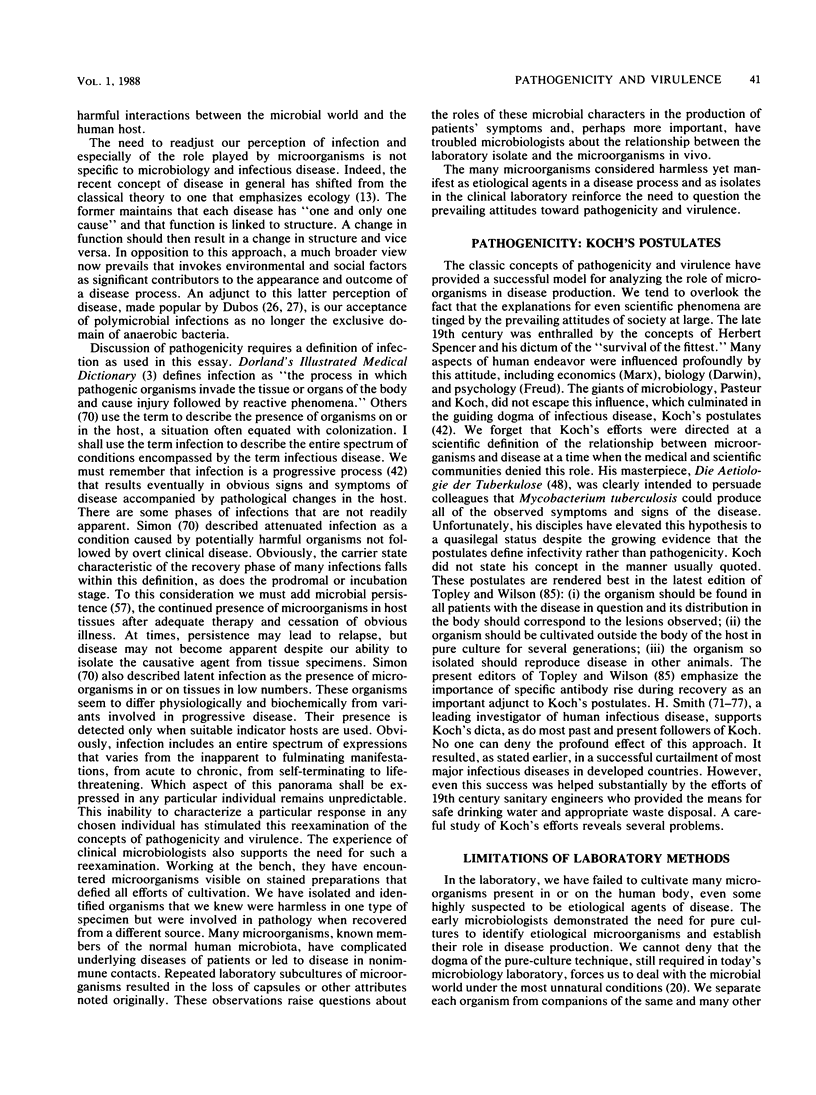
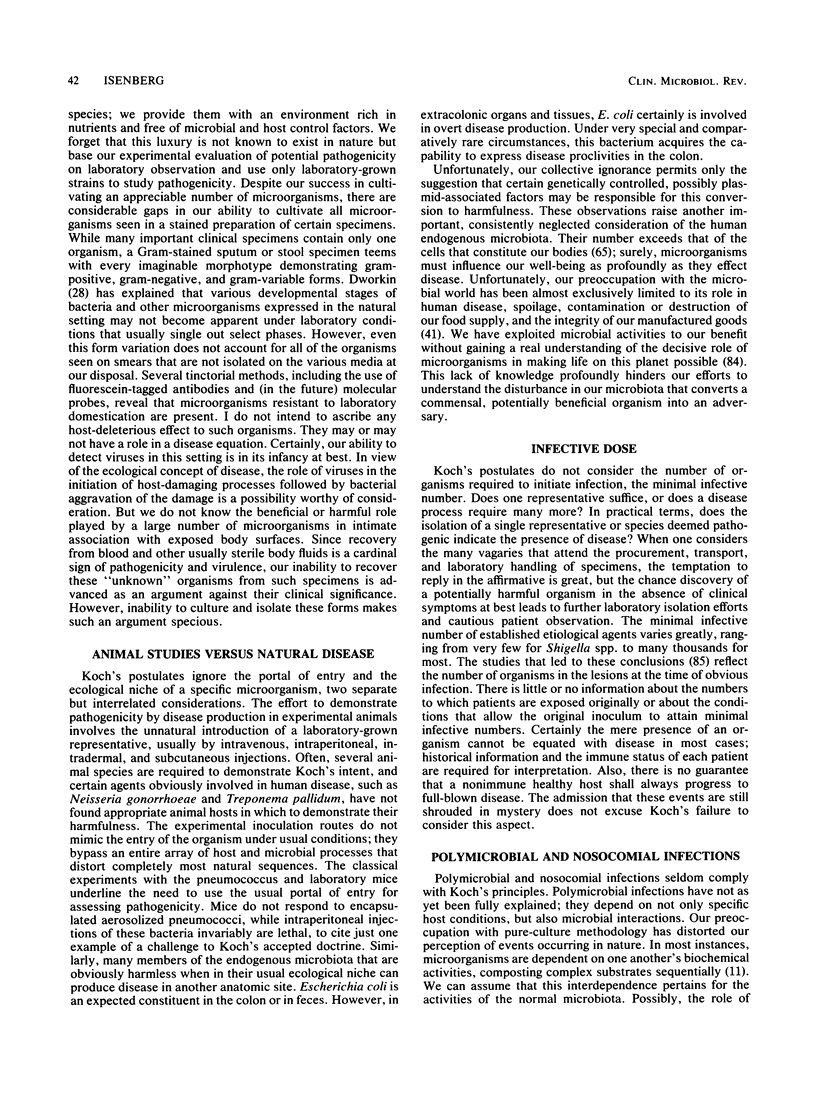
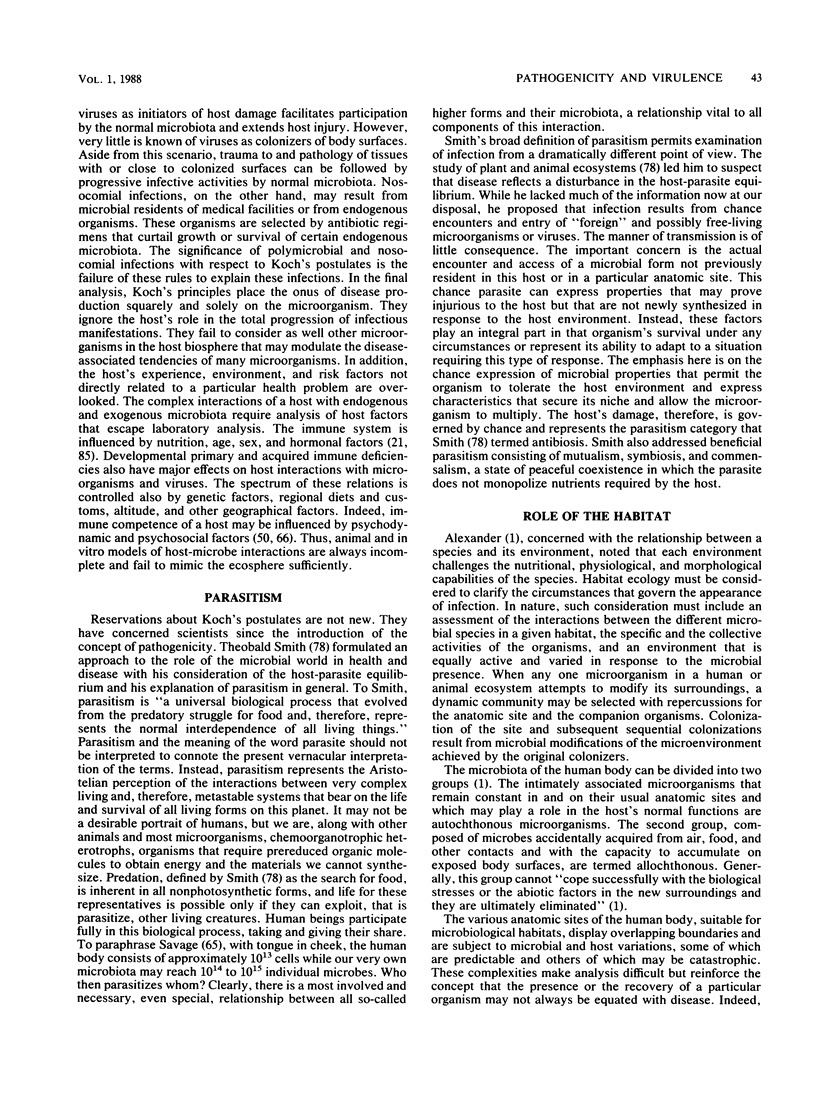
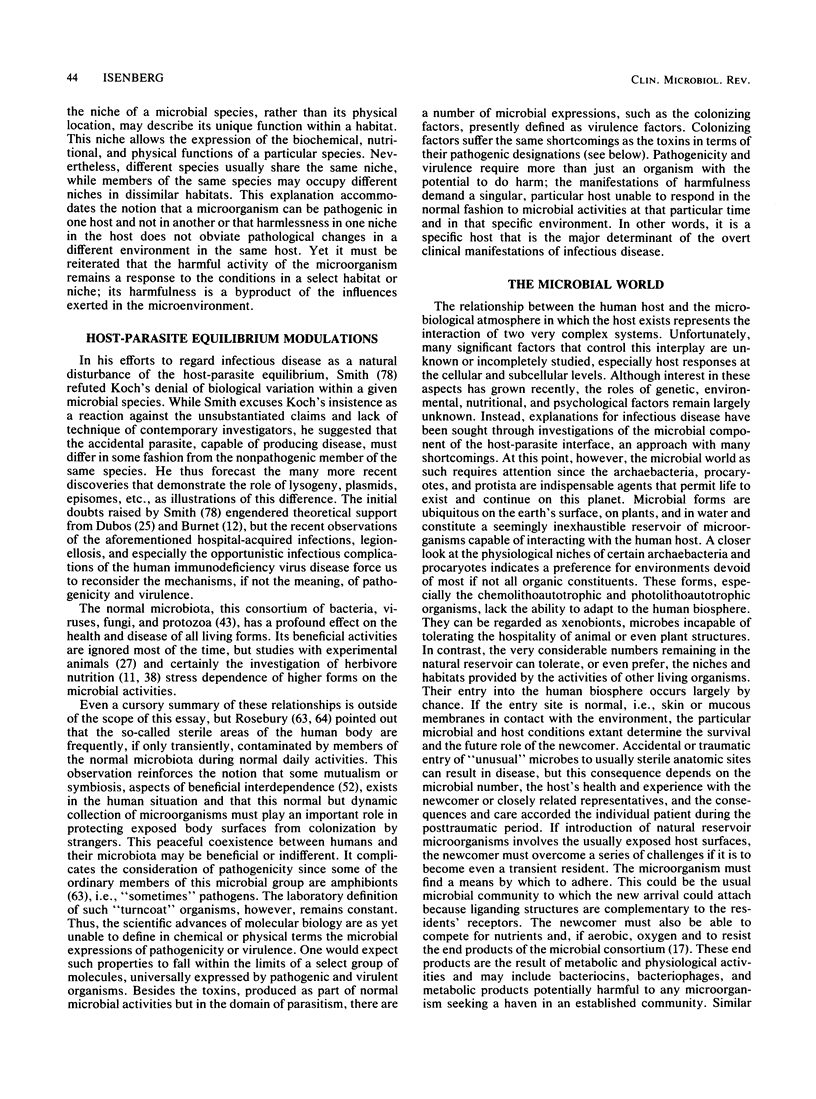
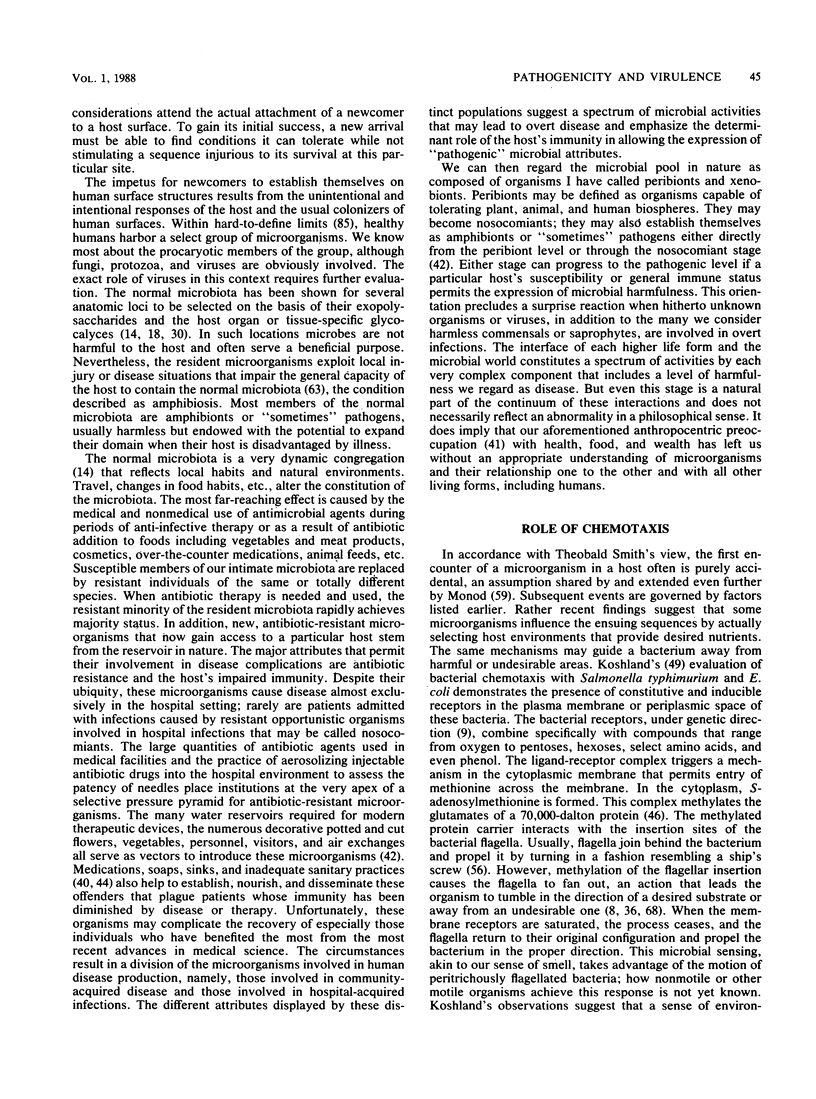
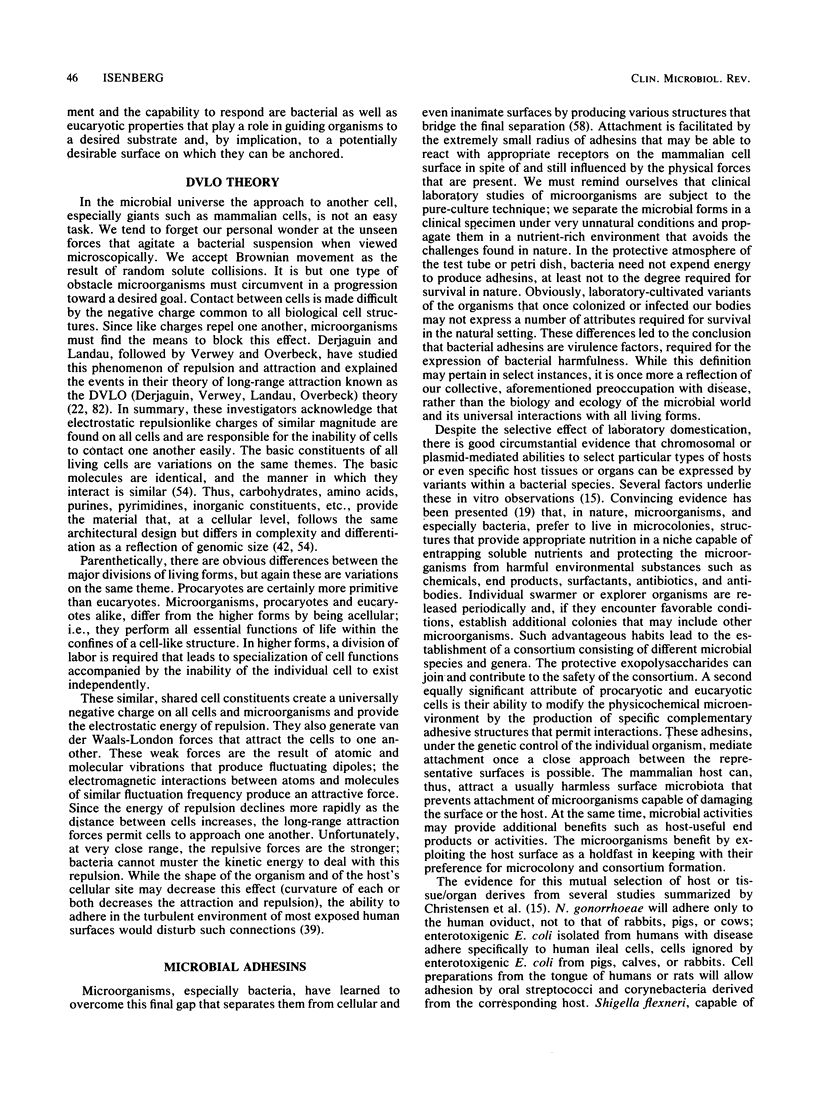
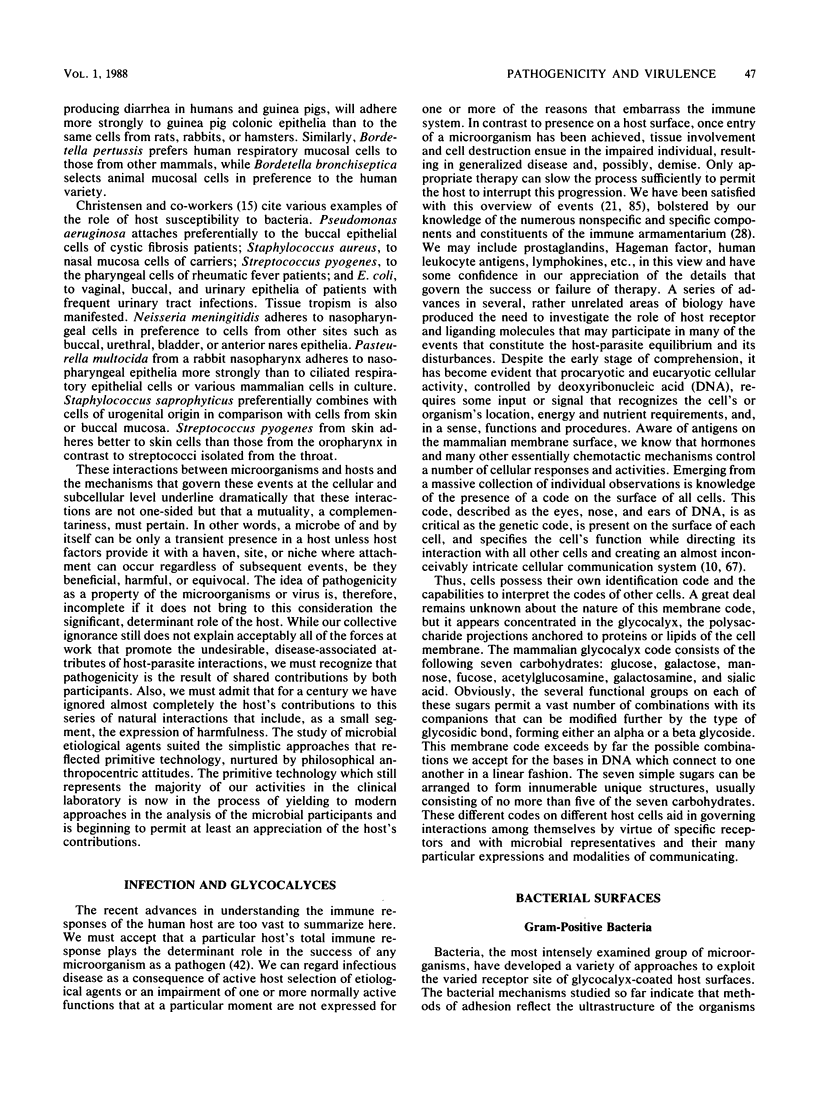
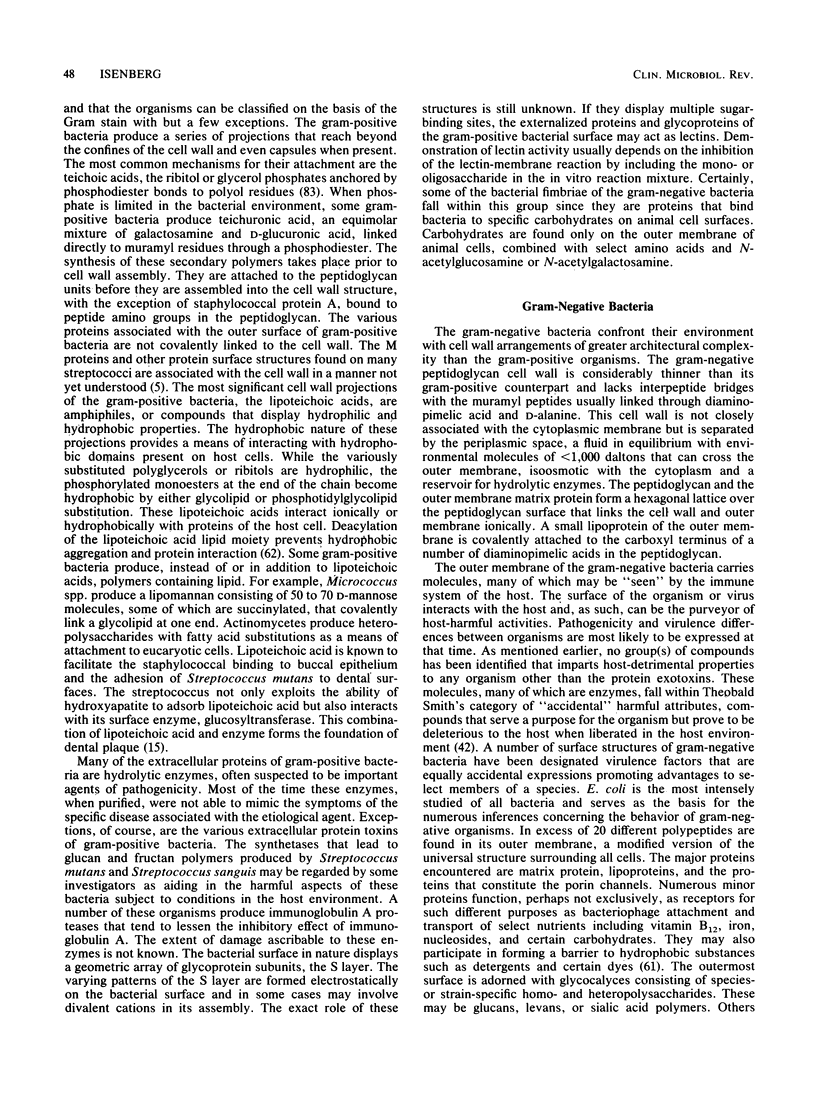
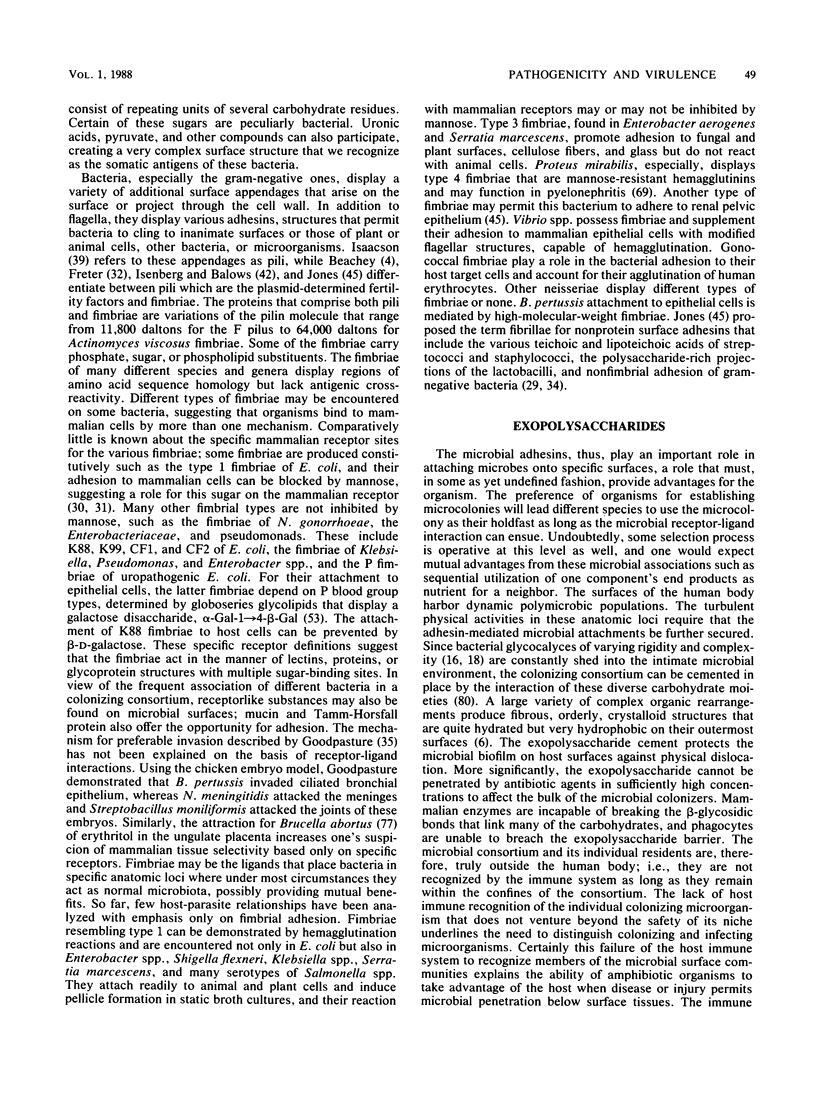
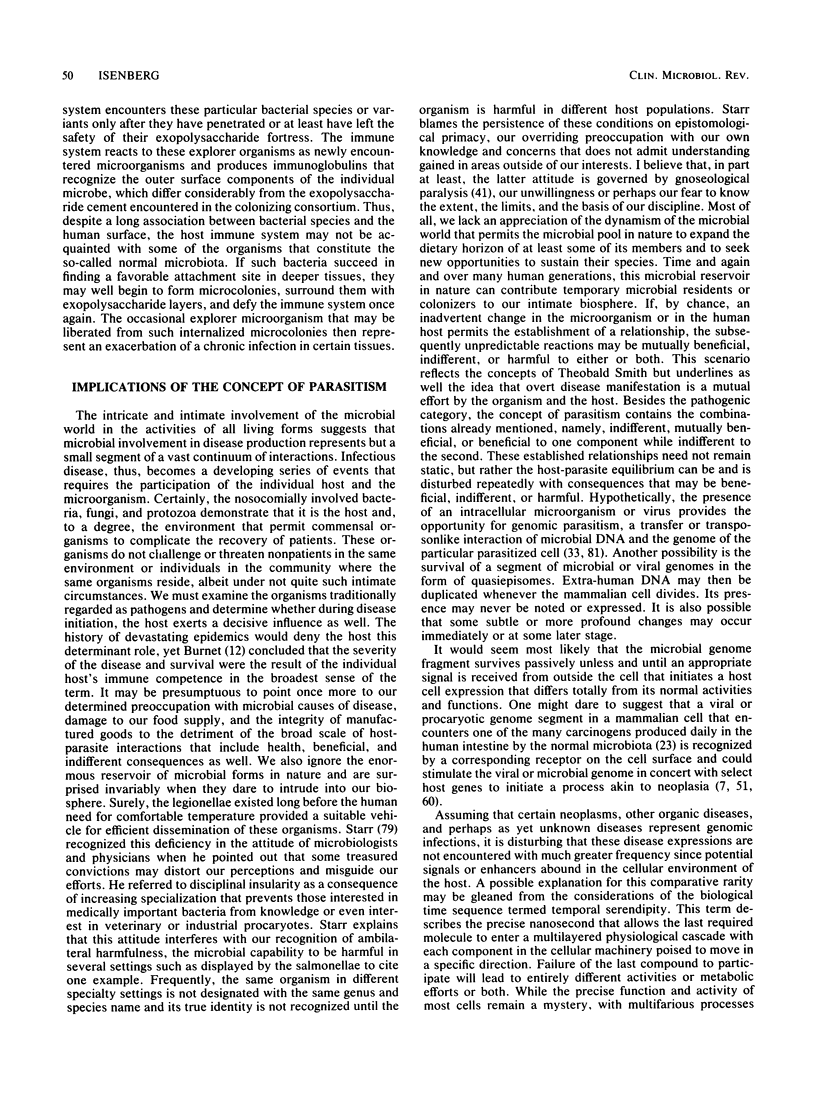
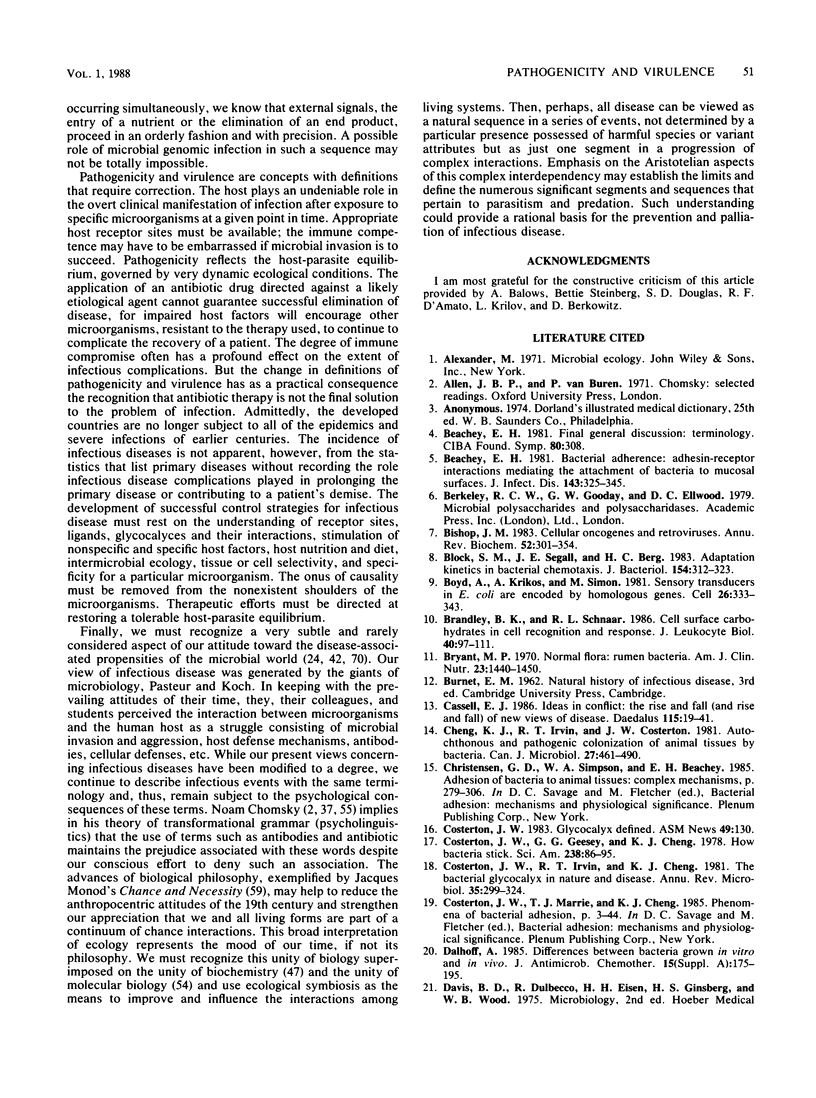

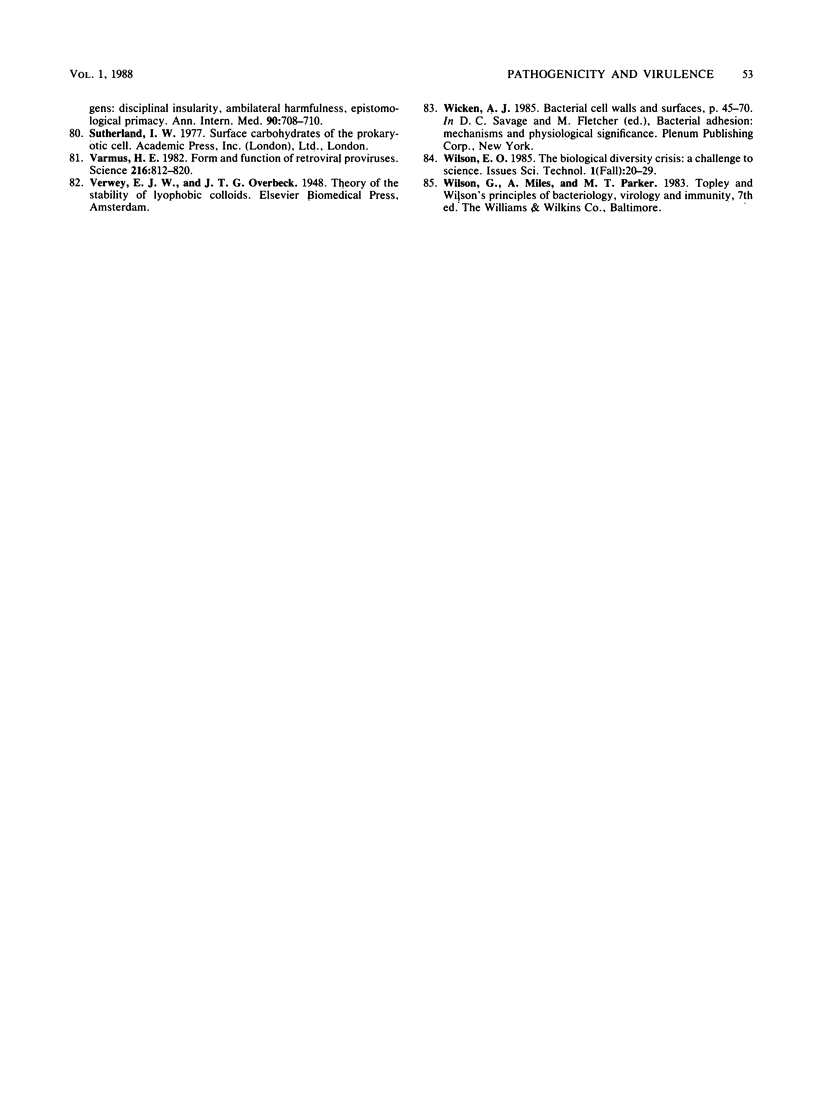
Selected References
These references are in PubMed. This may not be the complete list of references from this article.
- Beachey E. H. Bacterial adherence: adhesin-receptor interactions mediating the attachment of bacteria to mucosal surface. J Infect Dis. 1981 Mar;143(3):325–345. doi: 10.1093/infdis/143.3.325. [DOI] [PubMed] [Google Scholar]
- Bishop J. M. Cellular oncogenes and retroviruses. Annu Rev Biochem. 1983;52:301–354. doi: 10.1146/annurev.bi.52.070183.001505. [DOI] [PubMed] [Google Scholar]
- Block S. M., Segall J. E., Berg H. C. Adaptation kinetics in bacterial chemotaxis. J Bacteriol. 1983 Apr;154(1):312–323. doi: 10.1128/jb.154.1.312-323.1983. [DOI] [PMC free article] [PubMed] [Google Scholar]
- Boyd A., Krikos A., Simon M. Sensory transducers of E. coli are encoded by homologous genes. Cell. 1981 Nov;26(3 Pt 1):333–343. doi: 10.1016/0092-8674(81)90202-6. [DOI] [PubMed] [Google Scholar]
- Brandley B. K., Schnaar R. L. Cell-surface carbohydrates in cell recognition and response. J Leukoc Biol. 1986 Jul;40(1):97–111. doi: 10.1002/jlb.40.1.97. [DOI] [PubMed] [Google Scholar]
- Bryant M. P. Normal flora--rumen bacteria. Am J Clin Nutr. 1970 Nov;23(11):1440–1450. doi: 10.1093/ajcn/23.11.1440. [DOI] [PubMed] [Google Scholar]
- Cassell E. J. Ideas in conflict: the rise and fall (and rise and fall) of new views of disease. Daedalus. 1986 Spring;115(2):19–41. [PubMed] [Google Scholar]
- Cheng K. J., Irvin R. T., Costerton J. W. Autochthonous and pathogenic colonization of animal tissues by bacteria. Can J Microbiol. 1981 May;27(5):461–490. doi: 10.1139/m81-071. [DOI] [PubMed] [Google Scholar]
- Costerton J. W., Geesey G. G., Cheng K. J. How bacteria stick. Sci Am. 1978 Jan;238(1):86–95. doi: 10.1038/scientificamerican0178-86. [DOI] [PubMed] [Google Scholar]
- Costerton J. W., Irvin R. T., Cheng K. J. The bacterial glycocalyx in nature and disease. Annu Rev Microbiol. 1981;35:299–324. doi: 10.1146/annurev.mi.35.100181.001503. [DOI] [PubMed] [Google Scholar]
- Dalhoff A. Differences between bacteria grown in vitro and in vivo. J Antimicrob Chemother. 1985 Jan;15 (Suppl A):175–195. doi: 10.1093/jac/15.suppl_a.175. [DOI] [PubMed] [Google Scholar]
- Feldner J., Bredt W., Kahane I. Adherence of erythrocytes to Mycoplasma pneumoniae. Infect Immun. 1979 Jul;25(1):60–67. doi: 10.1128/iai.25.1.60-67.1979. [DOI] [PMC free article] [PubMed] [Google Scholar]
- Firon N., Ofek I., Sharon N. Carbohydrate-binding sites of the mannose-specific fimbrial lectins of enterobacteria. Infect Immun. 1984 Mar;43(3):1088–1090. doi: 10.1128/iai.43.3.1088-1090.1984. [DOI] [PMC free article] [PubMed] [Google Scholar]
- Firon N., Ofek I., Sharon N. Interaction of mannose-containing oligosaccharides with the fimbrial lectin of Escherichia coli. Biochem Biophys Res Commun. 1982 Apr 29;105(4):1426–1432. doi: 10.1016/0006-291x(82)90947-0. [DOI] [PubMed] [Google Scholar]
- Freter R. Mechanisms of association of bacteria with mucosal surfaces. Ciba Found Symp. 1981;80:36–55. doi: 10.1002/9780470720639.ch4. [DOI] [PubMed] [Google Scholar]
- Ganem D., Varmus H. E. The molecular biology of the hepatitis B viruses. Annu Rev Biochem. 1987;56:651–693. doi: 10.1146/annurev.bi.56.070187.003251. [DOI] [PubMed] [Google Scholar]
- HUNGATE R. E., BRYANT M. P., MAH R. A. THE RUMEN BACTERIA AND PROTOZOA. Annu Rev Microbiol. 1964;18:131–166. doi: 10.1146/annurev.mi.18.100164.001023. [DOI] [PubMed] [Google Scholar]
- Hazelbauer G. L., Harayama S. Sensory transduction in bacterial chemotaxis. Int Rev Cytol. 1983;81:33–70. doi: 10.1016/s0074-7696(08)62334-7. [DOI] [PubMed] [Google Scholar]
- Isenberg H. D. Legionella, WIGA, et cetera: pathogens? Ann Intern Med. 1979 Nov;91(5):785–786. doi: 10.7326/0003-4819-91-5-785. [DOI] [PubMed] [Google Scholar]
- Kehry M. R., Dahlquist F. W. The methyl-accepting chemotaxis proteins of Escherichia coli. Identification of the multiple methylation sites on methyl-accepting chemotaxis protein I. J Biol Chem. 1982 Sep 10;257(17):10378–10386. [PubMed] [Google Scholar]
- Laudenslager M. L., Ryan S. M., Drugan R. C., Hyson R. L., Maier S. F. Coping and immunosuppression: inescapable but not escapable shock suppresses lymphocyte proliferation. Science. 1983 Aug 5;221(4610):568–570. doi: 10.1126/science.6603018. [DOI] [PubMed] [Google Scholar]
- Lewin R. Viroids may be escaped introns. Science. 1986 Sep 26;233(4771):1384–1384. doi: 10.1126/science.3749883. [DOI] [PubMed] [Google Scholar]
- Lomberg H., Jodal U., Eden C. S., Leffler H., Samuelsson B. P1 blood group and urinary tract infection. Lancet. 1981 Mar 7;1(8219):551–552. doi: 10.1016/s0140-6736(81)92878-6. [DOI] [PubMed] [Google Scholar]
- Macnab R. M., Aizawa S. Bacterial motility and the bacterial flagellar motor. Annu Rev Biophys Bioeng. 1984;13:51–83. doi: 10.1146/annurev.bb.13.060184.000411. [DOI] [PubMed] [Google Scholar]
- McDERMOTT W. Microbial persistence. Yale J Biol Med. 1958 Feb;30(4):257–291. [PMC free article] [PubMed] [Google Scholar]
- Nebert D. W., Gonzalez F. J. P450 genes and evolutionary genetics. Hosp Pract (Off Ed) 1987 Mar 15;22(3):63–74. [PubMed] [Google Scholar]
- Nikaido H., Vaara M. Molecular basis of bacterial outer membrane permeability. Microbiol Rev. 1985 Mar;49(1):1–32. doi: 10.1128/mr.49.1.1-32.1985. [DOI] [PMC free article] [PubMed] [Google Scholar]
- SMITH H. The use of bacteria grown in vivo for studies on the basis of their pathogenicity. Annu Rev Microbiol. 1958;12:77–102. doi: 10.1146/annurev.mi.12.100158.000453. [DOI] [PubMed] [Google Scholar]
- SMITH H., WILLIAMS A. E., PEARCE J. H., KEPPIE J., HARRIS-SMITH P. W., FITZ-GEORGE R. B., WITT K. Foetal erythritol: a cause of the localization of Brucella abortus in bovine contagious abortion. Nature. 1962 Jan 6;193:47–49. doi: 10.1038/193047a0. [DOI] [PubMed] [Google Scholar]
- Savage D. C. Microbial ecology of the gastrointestinal tract. Annu Rev Microbiol. 1977;31:107–133. doi: 10.1146/annurev.mi.31.100177.000543. [DOI] [PubMed] [Google Scholar]
- Schleifer S. J., Keller S. E., Stein M. Stress effects on immunity. Psychiatr J Univ Ott. 1985 Sep;10(3):125–131. [PubMed] [Google Scholar]
- Schnaar R. L. Immobilized glycoconjugates for cell recognition studies. Anal Biochem. 1984 Nov 15;143(1):1–13. doi: 10.1016/0003-2697(84)90549-9. [DOI] [PubMed] [Google Scholar]
- Silverblatt F. J., Ofek I. Influence of pili on the virulence of Proteus mirabilis in experimental hematogenous pyelonephritis. J Infect Dis. 1978 Nov;138(5):664–667. doi: 10.1093/infdis/138.5.664. [DOI] [PubMed] [Google Scholar]
- Smith H. Biochemical challenge of microbial pathogenicity. Bacteriol Rev. 1968 Sep;32(3):164–184. doi: 10.1128/br.32.3.164-184.1968. [DOI] [PMC free article] [PubMed] [Google Scholar]
- Smith H. Microbial surfaces in relation to pathogenicity. Bacteriol Rev. 1977 Jun;41(2):475–500. doi: 10.1128/br.41.2.475-500.1977. [DOI] [PMC free article] [PubMed] [Google Scholar]
- Starr M. P. Plant-associated bacteria as human pathogens: disciplinal insularity, ambilateral harmfulness, epistemological primacy. Ann Intern Med. 1979 Apr;90(4):708–710. doi: 10.7326/0003-4819-90-4-708. [DOI] [PubMed] [Google Scholar]
- Varmus H. E. Form and function of retroviral proviruses. Science. 1982 May 21;216(4548):812–820. doi: 10.1126/science.6177038. [DOI] [PubMed] [Google Scholar]


